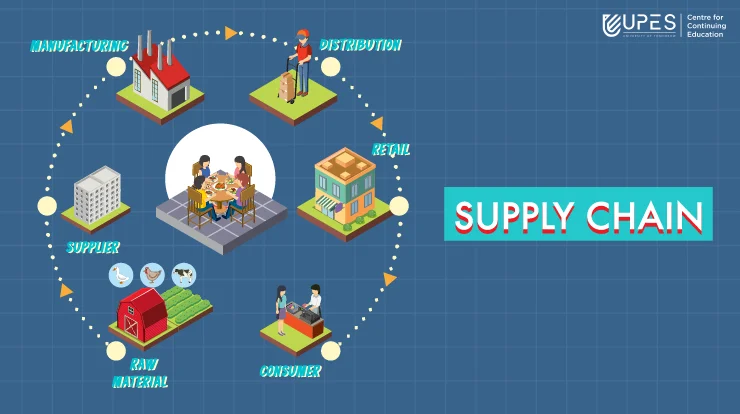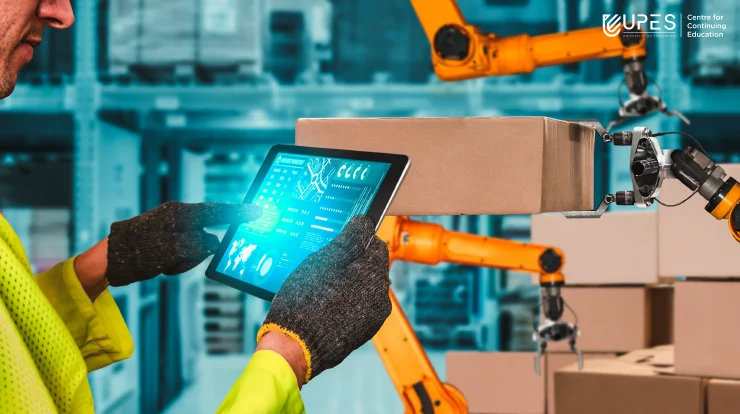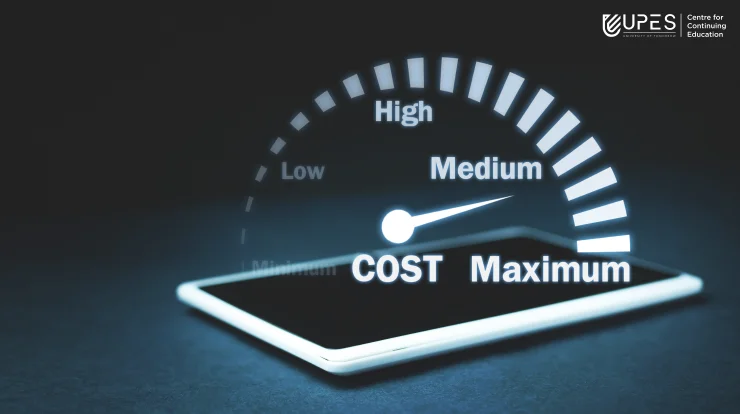Optimizing Your Supply Chain with Transportation Management

Transportation management plays a critical role in today’s global economy by ensuring the efficient and effective movement of goods and materials. Proper transportation management is essential for businesses to remain competitive and maintain customer satisfaction.
Transportation Management Systems (TMS)
TMS software helps businesses manage transportation operations, providing real-time visibility, optimizing transportation networks, reducing costs, and improving customer service.
Definition and role of TMS
TMS is a comprehensive solution that helps businesses manage their transportation activities, from planning and execution to financial settlement.
TMS gives companies real-time visibility into their transportation network, allowing them to optimize their routes, select the most cost-effective carriers, and manage their transportation spend.
Benefits of TMS for businesses
The benefits of TMS for businesses include the following:
- Improved operational efficiency
- Reduced transportation costs
- Improved customer service and satisfaction
- Increased visibility into transportation activities
- Better control over transportation spend
- Increased collaboration between supply chain partners
Types of TMS
There are several types of TMS, including:
- On-premise TMS: Software installed on a company’s servers and managed internally
- Cloud-based TMS: Software accessed through the internet and hosted by a third-party provider
- Hybrid TMS: A combination of on-premise and cloud-based software
- Open-source TMS: Software with source code that users can modify and customize.

Logistics and Supply Chain Management
Logistics and supply chain management are closely linked, with efficient logistics management essential for the timely and cost-effective movement of goods and materials.
A supply chain manager coordinates and manages all activities involved in delivering goods and services.
Explanation of Logistics and Supply Chain Management
Logistics management involves the planning, execution, and control of the movement of goods and materials from one point to another, including transportation planning, inventory management, order processing, and warehousing.
Supply chain management involves coordinating and controlling all activities involved in producing and delivering goods and services to customers.
Importance of efficient logistics management
Efficient logistics management is essential for businesses to ensure the timely and cost-effective movement of goods and materials.
Efficient logistics management can help companies to reduce transportation costs, optimize inventory levels, and improve customer service.
Role of transportation in supply chain management
Transportation is essential for supply chain management, moving goods and materials between suppliers, manufacturers, and customers. It is crucial for ensuring that goods are delivered to customers on time and in good condition.
Effective transportation management can help businesses reduce lead times, improve on-time delivery rates, and enhance customer satisfaction.

Transportation Modes
Transportation modes refer to the different methods of moving goods and materials from one location to another.
Several transportation modes are available, including road, rail, air, and water. Each method has advantages and disadvantages, and businesses must choose the appropriate method for their needs.
Overview of transportation modes
The four primary transportation modes are:
- Road transportation involves using trucks, vans, and other vehicles to transport goods and materials over land.
- Rail transportation involves using trains to transport goods and materials over long distances.
- Air transportation involves using airplanes to transport goods and materials over long distances quickly.
- Water transportation involves using ships and boats to transport goods and materials over long distances.
Advantages and disadvantages of each mode
Each transportation mode has its advantages and disadvantages, which include:
Road transportation: Advantages include flexibility, accessibility, and quick transit times for short distances. Disadvantages include higher costs for longer distances, capacity constraints, and congestion.
Rail transportation: Advantages include lower costs, high capacity, and reduced carbon emissions. Disadvantages include longer transit times, limited accessibility, and higher short-distance prices.
Air transportation: Advantages include quick transit times, accessibility, and reliability. Disadvantages have higher costs, limited capacity, and environmental concerns.
Water transportation: Advantages include low costs, high capacity, and reduced carbon emissions. Disadvantages include longer transit times, limited accessibility, and weather-related risks.
Choosing the correct mode for specific goods and materials
The most appropriate way of transportation is determined by factors such as type of goods, distance, urgency, and cost.
Transportation Planning and Optimization
Transportation planning and optimization involve strategically managing transportation activities to ensure efficient and cost-effective movement of goods and materials.
Importance of Transportation Planning and Optimization
Effective transportation planning and optimization can help businesses reduce transportation costs, improve operational efficiency, and enhance customer service.
It can also help companies to improve their supply chain visibility and collaboration with supply chain partners.
Components of Transportation Planning and Optimization
The components of transportation planning and optimization include:
- Transportation network design: Analyzing transportation data to determine the optimal transportation routes, carriers, and modes of transportation.
- Carrier selection: Select the most cost-effective carriers based on their rates, reliability, and service level agreements.
- Shipment planning: Determining the best way to consolidate shipments to optimize transportation routes and minimize costs.
- Freight audit and payment: Verifying and approving carrier invoices to ensure accurate billing and reduce transportation spend.
- Performance management: Monitoring carrier performance and identifying areas for improvement.
Technology for Transportation Planning and Optimization
Technology helps businesses optimize transportation routes and select the most cost-effective carriers.
Other technologies like GPS tracking and route optimization software can help businesses improve transportation planning and optimization.
Emerging Technologies in Transportation Management
Emerging transportation management technologies are transforming how businesses manage their transportation activities. These technologies enable businesses to optimize transportation planning, enhance supply chain visibility, and reduce transportation costs.

Overview of Emerging Technologies
Some of the emerging technologies in transportation management include:
- Internet of Things (IoT): IoT devices can track shipments, monitor vehicle performance, and optimize transportation routes.
- Artificial Intelligence (AI): AI can analyze transportation data, optimize transportation routes, and improve carrier selection.
- Blockchain: Blockchain technology can improve supply chain visibility and transparency, reduce paperwork, and enhance security.
- Autonomous Vehicles: Autonomous vehicles are being developed and tested for use in transportation. They can improve transportation safety, reduce costs, and increase efficiency.
Benefits of Emerging Technologies in Transportation Management
The benefits of emerging technologies in transportation management include:
- Improved transportation planning and optimization
- Enhanced supply chain visibility
- Reduced transportation costs
- Increased operational efficiency
- Improved customer service
Challenges in Adopting Emerging Technologies
While emerging technologies offer numerous benefits, there are also challenges in adopting them, including:
- High implementation costs
- Resistance to change
- Data security concerns
- Regulatory and legal barriers

Importance of staying up-to-date with emerging technologies
To remain competitive, businesses must stay up-to-date with emerging technologies in transportation management.
By embracing these technologies, businesses can improve transportation operations, reduce costs, and enhance customer service.
Conclusion
In conclusion, transportation management plays a critical role in the success of businesses that rely on moving goods and materials. By embracing best practices and emerging technologies, companies can achieve a competitive edge in today’s complex transportation landscape.
Recommended Blogs

7 Surprising Benefits of an MBA in Oil and Gas Management
An MBA in Oil and Gas Management helps you advance your career with Leadership Skills, Networking, Global Knowledge, Professional Growth.
Read MoreMar 15, 2024 I 2 minutes
45+ Business Development Interview Qs! (Basic, Concepts, Tech)
Master your Business Development interview prep with 45 most asked questions for freshers, experienced & techies. New Questions updated!
Read MoreFeb 16, 2024 I 10 minutes
Introduction to Renewable Energy Management: What You Need To Know
Discover what is renewable energy management, its importance to the world and the key aspects of managing these energy sources.
Read MoreJan 20, 2023 I 2 minutes
Ace Your Data Governance Interview with these 55 Question Types
Master 55 data governance interview Questions, from data lineage puzzles to AI challenges. Sharpen your skills & land your dream data role.
Read MoreJan 21, 2024 I 15 minutes


